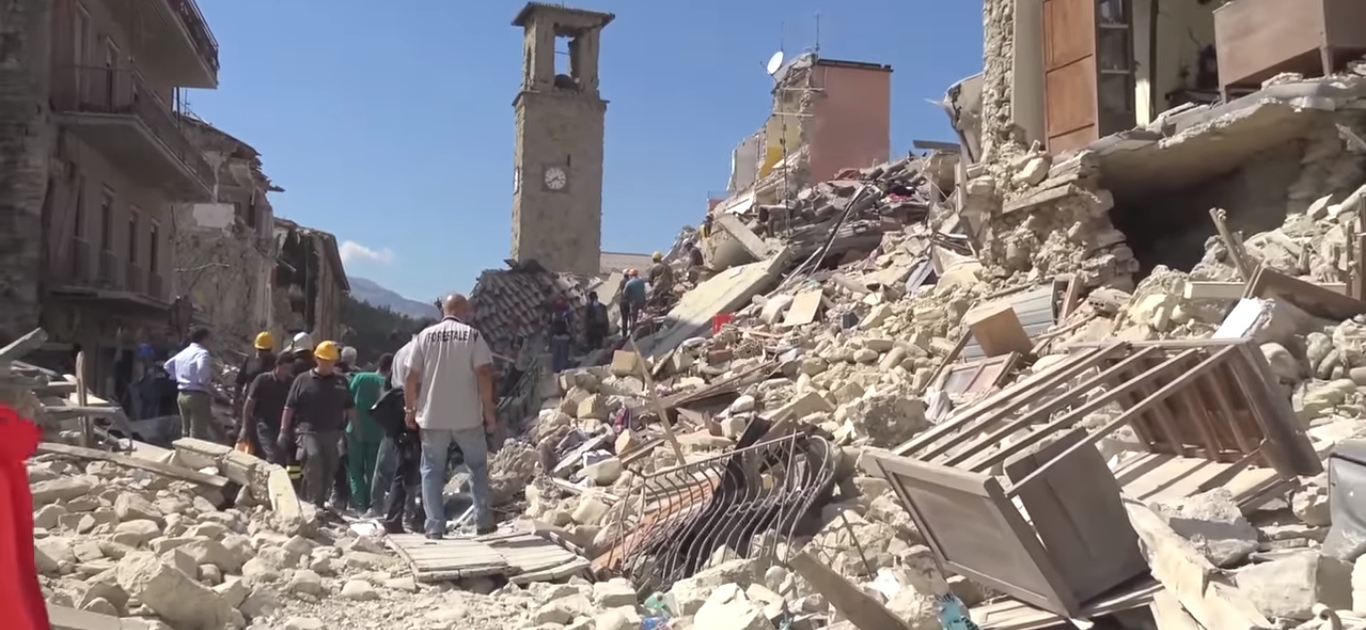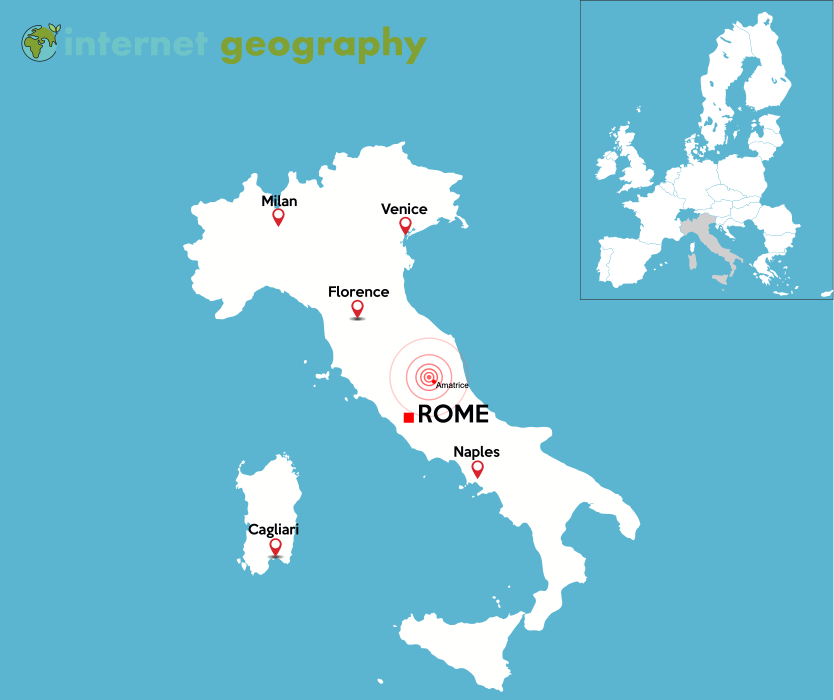Amatrice Earthquake Case Study
On 24 August 2016, a magnitude 6.2 earthquake struck central Italy to the southwest of the town of Norcia. The earthquake’s epicentre was at a shallow depth of only 5.1 km. It was the strongest earthquake to hit Italy since the 2009 L’Aquila earthquake, when over 300 people died in the earthquake measuring 6.3 on the Richter Scale.
The Amatrice earthquake was felt over 100 miles away in Rome. The town of Amatrice experienced a range of primary and secondary effects that had a range of social, economic and environmental impacts.
What caused the Amatrice earthquake?
Italy lies on the collision border of the Eurasian and African plates. As a result, Italy is riddled with faults. Two major fault lines are running through Italy, the north-south fault and the east-west fault leading to the country being pulled and pushed in several directions. The Apennines, a mountain range that runs down the middle of Italy, is being stretched in a northwest direction at a rate of around 3 mm per year. Pressure builds along the fault and, when released, causes earthquakes.
What were the effects of the Amatrice earthquake?
The shallow depth of the earthquake, the focus was just 5.1km deep, led to severe damage on the surface, particularly in the towns of Amatrice, Accumoli and Arquata del Tronto. As the earthquake struck at 3.36 a.m., most people in the area were asleep in collapsed buildings. An estimated 13,000 people experienced severe ground movement for around 10-20 seconds, and more than 200,000 would have felt strong tremors. By 29 August 2016, there had been about 2,000 aftershocks, some as strong as magnitude 5.5.
It is also worth noting that Amatrice, which usually has a population of 2,500, was about to celebrate its fiftieth annual food festival, so there were additional visitors in the town at the time.
Primary Effects
The primary effects of the Amatrice earthquake include:
- Two hundred ninety-nine people died, 400 were injured, and 4454 were homeless.
- 293 historic buildings were damaged or destroyed, including the Basilica of San Francesco in Amatrice
- Over half the buildings in Amatrice were damaged or destroyed. Despite their reinforcements, 80 per cent of the buildings in the old town were affected.
- Although the government allocated €1 billion for building improvements since the 2009 L’Aquila earthquake, many properties did not meet seismic building standards. The uptake of the funding had been low.
- Despite being restored in 2012, the school in Amatrice collapsed, indicating substandard building practices.
Secondary Effects
The secondary effects of the Amatrice earthquake include:
- Landslides blocked roads, making access to the area difficult.
- Local residents suffered psychological damage.
- Individuals were reported to have been involved in looting.
- Unsafe buildings led to the town centre being cordoned off. This had a negative impact on tourism.
- Ninety per cent of barns and stalls for sheep, goats, and cattle in the affected area were destroyed, alongside the mechanical milking systems. As a result, farmers struggled to milk by hand, leaving their cattle at risk of mastitis, an udder-tissue disease. Farmers struggled to make a living in the aftermath of the earthquake.
- The earthquake resulted in an estimated $11 billion in economic losses.
What were the responses to the Amatrice earthquake?
Immediate Responses
- Ten thousand homeless people were accommodated in 58 tent camps.
- Sports halls were converted to provide shelter, and hotels on the Adriatic coasts were used to home people temporarily.
- Many rescue workers arrived within an hour of the earthquake. Five thousand soldiers, alpine guides, and the Italian Red Cross were involved in searching for survivors, providing food and water, and supplying tents. Seventy dog teams and twelve helicopters were involved in the rescue effort.
- Six of the Vatican’s 37 firefighters have travelled to Amatrice to help civil protection workers look for survivors.
- A temporary hospital was set up, and patients at Amazatrice Hospital, severely damaged during the earthquake, were transferred to a nearby hospital in Rieti.
- Appeals were made by the national blood donation service to ensure demand was met.
- Facebook activated safety check features so local people could inform family and friends they were safe.
- Locals removed passwords from Wi-Fi at the Italian Red Cross’s request so rescue teams could communicate more effectively.
- The Italian Government announced a €50 million emergency response. Taxes for residents were cancelled, and reconstruction work began immediately.
Long Term Responses
- Students were educated in neighbouring schools, while 12 classrooms were constructed in prefabricated buildings in Amatrice.
- Six months following the earthquake, the government promised to move people from temporary camps into wooden houses.
- The cost of rebuilding was reduced by tax incentives, allowing 65 per cent of total renovation costs to be used as tax breaks.
- Villages were rebuilt, with the building of the same character through a €42 million government initiative called ‘Italian Homes’.
- A year on, 2.4 million tons of debris and rubble remained in the areas affected by the earthquake.
Related Topics
Use the images below to explore related GeoTopics.




